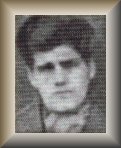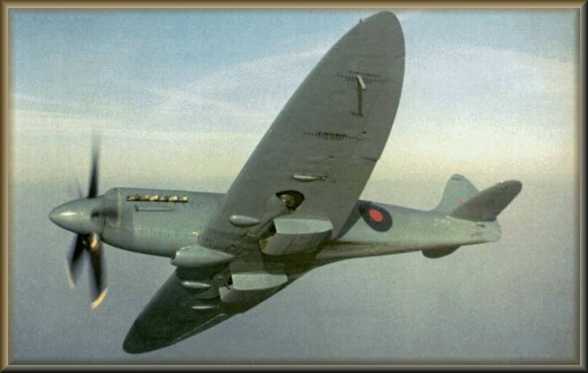Archives and notes on my searches concerning this date & victory
Spitfire Mk IV Serial AA810

Executed on June 4, 1944 later "The great Escape" of Sagan's prison camp.
Serial
Type
Squadron
Code
Date
Reason
Mission / Crash location
Pilot
AA810
PR Mk IV
1 PRU
LY ?
5 mars 1942
Me 109
Trondheim
Gunn
Chassis #2203, Merlin 45, taken out of factory on October 17, 1941 and allocated to the 1 PRU on October 19, 1941.
Searches concerning this victory :
Spitfire declared lost 05/03/1942 :
Message from Henk Welting "Heinz Knoke first victories" Thu Jan 13 05:58:32 2000 Spitfire 5-3-42 must have been AA810 of 1 PRU. F/Lt A.D.M. GUNN PoW but executed 6-4-44
after the 'Great Escape' from Sagan PoW-camp. I have no crashlocation. Do you ??
Regards from Holland - Henk.My answer :
Mission for spitfire was photo reconnaissance on Trondhjem Fjord with german cruisers scharnhorst
and Prinz Eugen. Crashlocation is in Norway probably near Trondhjem.
Message from Pierre Renier "Loss of 1PRU Spit" Mon Feb 7 01:10:32 2000The ORB for 1PRU states that Pilot Officer Gunn took off from their Wick a/f at 08.07 hrs, flying Spitfire AA810 his objective being Trondheim but failed to return.
Hope the A/c serial helps in tracing a photo of the aircraft.
Message from Pierre Renier "Source of PRU info" Mon Feb 7 23:36:46 2000I've been researching over two years the PR cover of the Channel Islands. To aid my research I have purchased from the Public Record Office, Kew, London, a number of Squadron/Unit ORB's on 35mm microfilm. This has helped greatly, especially with follow up research at Keele University, in the Midlands where the vast majority of the Allied PR cover of western Europe is now held. They actually hold over 5 million prints, is well worth a visit, and I have spent many happy hours there.
The 1PRU ORB's are in record AIR 29/413 through 514, and cover 9/39 to 10/42. On Microfilm Diazo cost GBP56 inc P&P.
Source site web : The great EscapeExtrait de la liste des cinquantes victimes des représailles de la Gestapo :
60340 F/L Alastair D M Gunn, British, born 27-Sep-19, 1 PRU, PoW 5-Mar-42, recaptured near
Gorlitz, last seen alive 6-Apr-44, murdered by unknown Gestapo, cremated at Breslau.DIETER GERHARD and HEINZ KNOKE who had spent the evening of March 5, 1942 around a bottle together with Alastair D M GUNN, knew certainly never his sad destiny...
Informations :
Supermarine Spitfire Mk. IV
A variant of the Mk.V was numbered the Mk.IV it was a MkV turned into a photo-reconnaissance aircraft.
The guns were removed and additional fuel tanks were installed in the wings. Cameras were installed
in the rear of the fuselage, the wings were lengthened with rounded tips and the cockpit was pressurised.A total of 229 Mk. IV versions were produced for photo-reconnaissance.


1941
After Coastal Command had taken control of the Photographic Reconnaissance Unit,
Bomber Command decided it needed one of its own. Consequently, No 2 PRU was formed
at Oakington under the command of 3 Group. Six Spitfire Mk ICs were used to photograph
areas before bombing raids, in order that targets could be properly marked. The Spitfires
then re-photographed the areas after the raid so that the damage could be assessed.1942
The Photographic Reconnaissance Unit was split into four squadrons in October.
Nos 541, 542 and 543 were fully equipped with Spitfire Mk IVs, while 544 Squadron had other
types as well as some Mk IVs.
History of No. 39 (1 Photographic Reconnaissance Unit) Squadron.
Number 39 (1 Photographic Reconnaissance Unit) Squadron, to give the unit its correct title, is, in essence, an amalgamation of two famous RFC/RAF squadrons : Number 39 Squadron and Number 1 Photographic Reconnaissance Unit (PRU) was formed at Heston Airport in September 1939 originally under civilian control. In the first four months of the War, some 5,000 square miles of enemy territory with a single Spitfire were photographed. The RAF, by comparison, had covered 2,500 square miles for the loss of 40 aircraft. In the summer of 1940, it was established on a regular RAF footing and shortly after began a year-long watch on the German battle cruisers Gneisenau and Scharnhorst harboured in Brest. During this time seven pilots from the Unit were lost - the highly modified Spitfires they flew were unarmed in an effort to keep the aircraft's weight to a minimum and obtain the highest possible altitude. In May 1941, aircraft of No 1 PRU spotted the German battleship Bismarck attempting to break into the North Atlantic, thus starting the epic hunt that led to its sinking. Other notable feats achieved by the Unit include the first sighting of the German cruiser Admiral Hipper in dry dock at Brest and photographs of the German radar station at Bruneval that led to the famous Commando raid of 1942. In October 1942, No 1 PRU was broken up to form a famous series of RAF PR Squadrons.

Source : Aéro Journal N°13 Article "Souriez vous êtes fimés !" An interesting article in this review concerning the PRU. It is about the story of a pilot of recognition, Wing Commander Roy Buchanan, having been allocated to the 1 PRU in April, 1942. Numerous qualitative photos illustrate this article and magnificent profiles let suspect the potential colours of Spitfires of the 1 PRU at the time.

